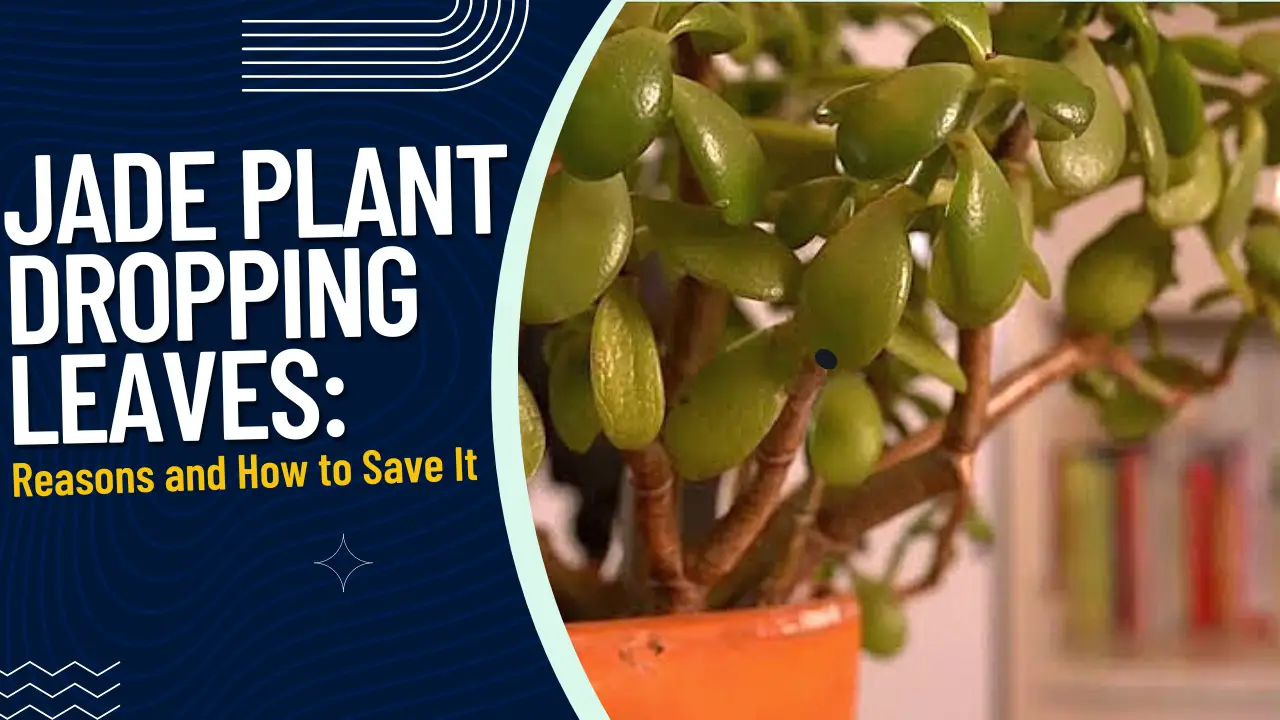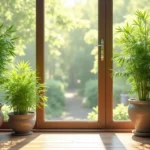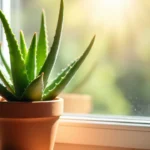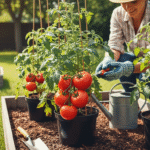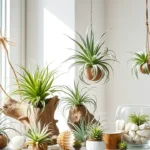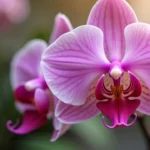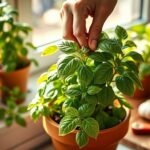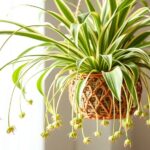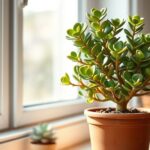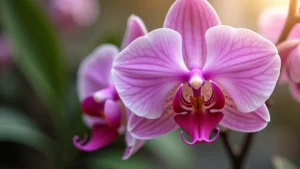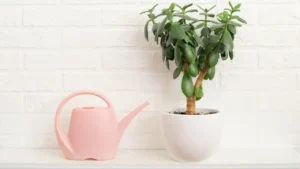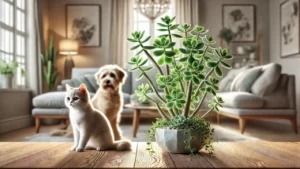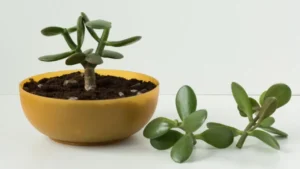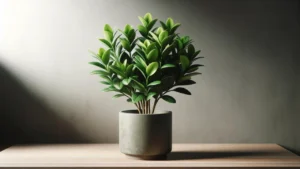The jade plant is well-known in Feng Shui for bringing success and wealth to the owner. It is also known as the money tree and a good luck charm, becoming a popular housewarming gift.
Apart from bringing positive energy to the house, the tiny green leaves capture the attention quickly. But when the leaves of a jade plant fall, it is not because something unlucky is about to happen.
Your jade leaves might be turning yellow before falling off the plant. There can be several reasons that could lead to dropping the leaves. If you stumbled upon the question “Why is my jade plant losing leaves?” I got your back.
Here are the top 12 reasons for your jade plant leaves falling off.
Table of Contents
Why is my jade plant dropping leaves?
Here are some of the primary reasons for your jade plant dropping leaves:
1) Poor Drainage
Poor drainage is another common cause of your jade plant losing leaves. When growing a jade plant, many gardeners ignore the drainage hole due to a lack of aesthetic appeal.
No or poor drainage holes will make your plant waterlogged. It will develop root rot, harming its health and causing your jade plant dropping leaves. Poor drainage also creates an ideal environment for insects and bacteria to thrive in the soil.
2) Insufficient Sunlight
Lack of sun exposure can cause your jade plant leaves to fall off. If your jade plant doesn’t get enough light, it will lack the energy to produce food and grow. Eventually, the plant’s leaves will turn yellow and fall off.
Most of the plants prefer direct sunlight for 4 to 5 hours. You can grow them indoors or in the shade with enough natural bright light. Jade plants with variegated leaves prefer less direct light and can be grown indoors as long as natural light is present.
3) Watering
Watering plays a crucial role in the growth of jade plants. Both under and over-watering can cause your jade plant dropping leaves.
Overwatering
Overwatering is one of the most prominent reasons for jade plant leaves falling off. Succulents can store water in their stems for a long time, which is why they thrive in desert environments.
Overwatering can result in the dropping of leaves and cause root rot. Eventually, your jade will die. It despises being left in soggy, wet soil.
Watering frequently results in a dying jade plant attracting annoying pests such as scale insects, mealybugs, and fungus gnats.
Underwatering
I understand you completely; the jade plant is low on maintenance. But neglecting to water your jade and pouting over it will not work. When a jade plant is not getting enough water, it will naturally shed its leaves. First, inspect the soil when your plant’s leaves begin to fall off.
If your plant’s soil is too dry and cracked up, jade is running out of water. Throughout the summer, a jade plant grows new shoots and leaves. It is the time of year when your plant will require more water. Skipping the watering can leave in vain.
In winter, ideally, you should water your jade less and not entirely overlook it. If you skipped it completely and still wonder, “Why is my jade plant dropping leaves?” Not a good thing to do. It will hinder your plant’s growth.
4) Poor Soil
Using the incorrect potting mix will also result in your jade plant losing leaves. Jade plants require fertilizer to grow their leaves, but some soil lacks the right amount of nutrients.
If your jade plant has slight pigmentation or colorful foliage, it could be due to a lack of nutrients in your jade soil. Poor soil will make your jade unhappy and hamper healthy growth.
This poor potting mix is the source of many problems, including yellowing and browning foliage. Sometimes, your plant may not survive due to excess moisture in the soil. It can also cause root rot.
5) Environmental Shock
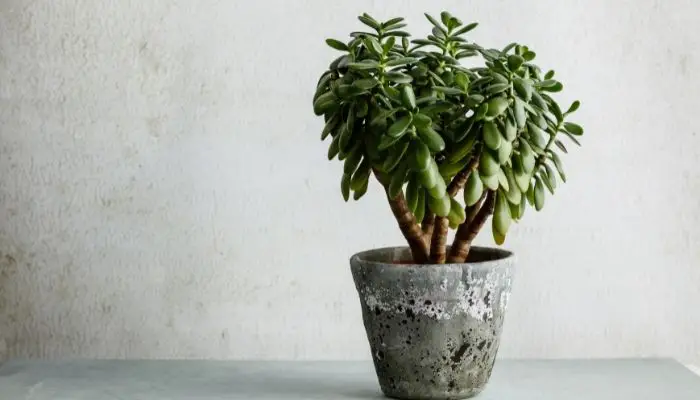
Any significant environmental change or stress to the plant can result in your jade plant leaves falling off. Even moving jade plants from one room to another can result in the loss of a leaf or two as it adjusts to the new environment.
Cold and hot draughts, as well as bright, intense spots of light, are all common environmental issues. You should not get too overwhelmed to witness a few leaves dropping after being transplanted. It is pretty normal.
You may also experience your jade plant losing leaves after you pick cuttings for propagation. You should be careful while doing so.
6) Old Age or Maturing
You can notice your old jade plant losing leaves, allowing new, fresh leaves to grow in. So, if your jade plant is losing leaves in small amounts, check to see if the branches have healthy leaves.
If not all leaves are dropping, don’t worry; it could be due to seasonal or environmental changes. Jade loses some of its leaves every year and replaces them with new ones. Although some fading may occur, your leaves should not turn bright yellow or dry out completely before dropping off. Examine your leaves and keep an eye out for an increase in leaf drops.
Several jade plant leaves falling off can be an issue. You should not avoid this type of leaf loss. It will cause the plant to stand tall with no leaves on.
7) Temperature and Humidity
Indoor plants like Jade dislike frequent climate change or temperature fluctuations. It directly impacts overall leaf production and can damage newly growing foliage.
When the jade plant does not receive the ideal temperature for growth, the leaves fall off. You may notice other problems such as leaf wrinkles, yellowing, or browning.
When the temperature rises, your jade plant loses water. It also causes the leaves to wrinkle, curl upward or downward, lose color, and eventually fall off. Your plants will restrict their growth in low or freezing temperatures. It may develop other problems such as root rot.
They prefer temperatures ranging from 15 to 25 degrees Celsius during the day and above 12 degrees Celsius at night. They do not want to experience sharp temperature swings even within these ranges.
Extreme hot draughts can cause your jade plant leaves falling off. It is more likely if the air is dry, such as from a heating vent or air conditioner. Jade plants also dislike low humidity levels, preferring at least 50% to 60% ambient humidity to prevent leaf drops.
8) Pests
One of the worst threats for any plant parent like you and me is pests. An infestation can spread quickly from plant to plant. So if you suspect a pest problem with your jade plant, remove it immediately from all other houseplants.
Jade plants can easily encounter mealybugs and spider mites attack. Both can cause your jade plants to fall off their tiny leaves. It will result in deformed leaves and a sticky, moldy jade plant.
a) Mealybugs
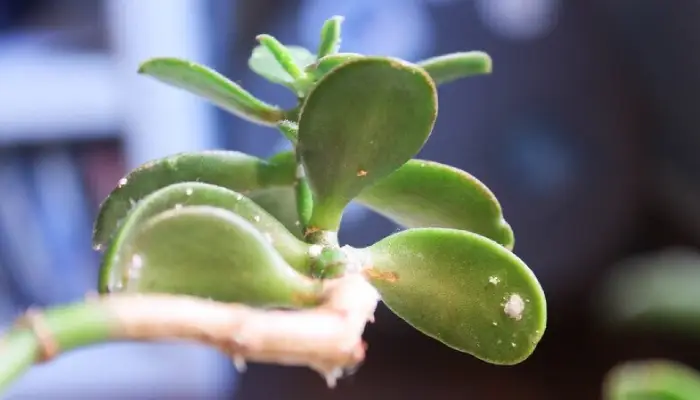
Mealybugs are tiny little insects that suck the sap from the leaves of a jade plant. These are one of the most common problems among succulents. You won’t even recognize them as pests as they are too small.
These have a small white cottony appearance that can fool the human eye. You may misidentify them as fungus. They can also have a brown or cream color. As you may expect, they can cause jade plant leaves to fall off.
They spread like wildfire and like to hide in all the nooks, making them the worst enemy of your jade plant.
b) Spider Mites
After mealybugs, spider mites are more likely to be your next opponent. But what exactly are they? Spider mites are tiny reddish/brown bugs that cause significant damage to your indoor plants.
They live in colonies, and you may mistake them for dust at first. Like mealybugs, they will suck all the juices out of your jade plant, causing the leaves to drop. They may build their colonies if not treated properly, causing your jade plant to drop its leaves.
9) Using Shine Products
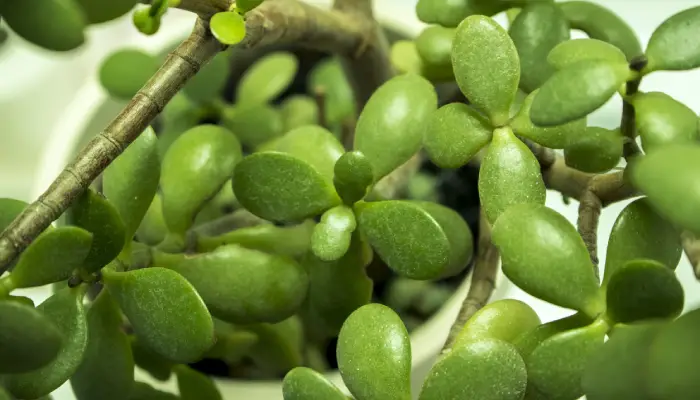
Never use leaf shine products on jade plants because they will turn yellow and fall off. When chemicals and cleaners come into contact with the leaves, they have a similar effect.
Over time, shiny products dull the leaves’ appearance. Harsh chemicals harm the leaves from within. Jade plant’s leaves will shine naturally if they are dust-free and healthy. If dust dulls the glow of your plant’s leaves, simply wipe them gently with a soft cloth.
10) Too Much or Too Little Fertilizer
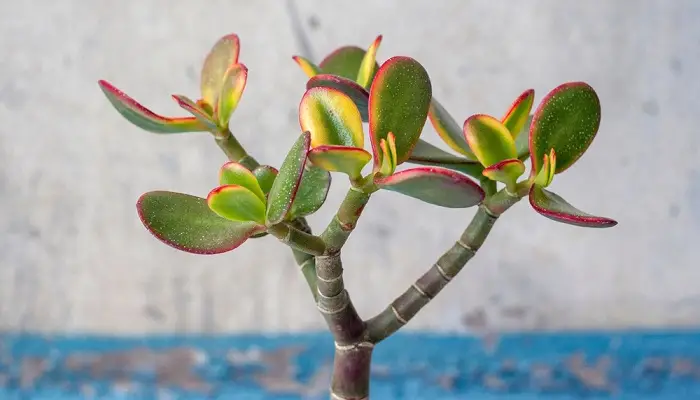
Fertilizer shock is challenging to predict yet causes your jade plant to drop leaves. Your jade plant will lose leaves from the bottom up if you apply too much fertilizer at once or too frequently.
Despite proper watering, the leaves may turn yellow or shrivel up before falling off. Although your jade plant will not fall its leaves due to a lack of fertilization, you should provide them with enough feeding. A lack of growth and a loss of color are common signs of insufficient fertilizer.
11) Cold Damage
The ideal temperature during the day is 18 degrees Celsius and 12 degrees Celsius at night. The leaves may drop when the temperature drops below 10 degrees. You should rotate your plant evenly, giving all its leaves equal sunlight.
Even if the plant catches a cold on one side of the plant, it may lead to the jade plant drooping leaves.
12) Root Rot
Overwatering is not only a direct cause of the jade plant leaves falling off. Root rot can develop if the plant becomes saturated for a long time and struggles to dry out.
It is a bacterial infection that begins with excessive moisture. A jade plant suffering from root rot will turn yellow and lose leaves from the bottom up. The problem may persist until the roots are dried out completely.
To solve the problem, mature plants may require a new potting mix or a root trim. Check that the Jade Plant’s container drains appropriately.
Other problems require different solutions to save your jade plants from falling off their leaves. Here I am mentioning some of the proven ways to protect your tiny green friend.
How to Save your Jade Plant from Dropping Leaves?
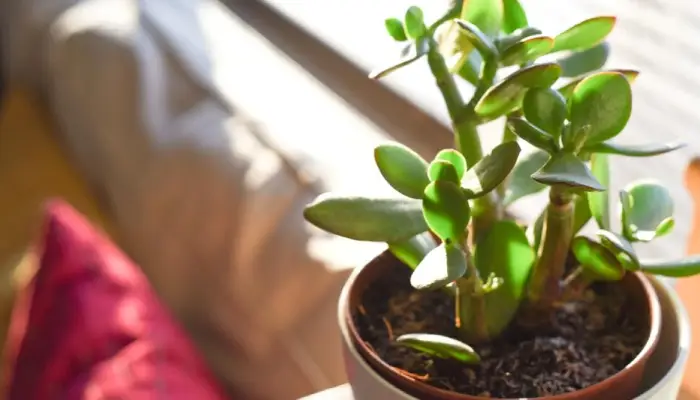
Saving your jade plant losing leaves is not time-taking or too complicated. You have to follow some basic care instructions, and your jade will grow back its green leaves.
1) Check Watering
As a general rule, you should wait for the soil to dry out before watering your jade plants again. Make sure to give the jade plant a thorough soaking until the water runs out of the drainage holes.
During the summer, when the jade plants grow and shoot, give them adequate watering.
Tips:
- Water when the top 2.5 inches of soil dry out.
- You should water your cute jade plant more yet less frequently.
2) Proper Drainage
You should always grow your plants in pots or containers with a drainage hole; the same goes for your jades. It helps excess water to drain properly. If you notice the plant’s soil draining slowly, check to see if the drainage hole is clogged with compressed soil or roots.
3) Right amount of sunlight
Jade plants adore sunlight. It promotes better growth. You should place your jade plant in a southern window where it can receive 4 hours of direct sunlight daily.
If you notice the jade plant dropping leaves at the start of winter, chances are it isn’t getting enough light! You should place your tiny jade plant near a window. Make sure to keep a sound distance from the glass because a constant draught can be just as harmful as low light.
You can use artificial light if you live in a freezing area with a constant draught through the window. Or if you reside in an apartment or flat like me, where you placed your jade plant in a shadier location. You can use artificial grow lights for better development.
4) Good Soil
Soil rich in nutrients plays a vital role in the jade plant’s growth. Even if you water your jade plant regularly, the leaves can turn yellow. How? Slow-draining soil. Your jade may die in slow-draining and moisture-retaining soil.
You should use soil in a combination of organic and inorganic matter. It will provide the rich nutrients for your jades to grow. You can purchase it from any nearby nursery or our store.
5) Right fertilizer
You should feed your jade plant with organic fertilizer to boost growth and development. To avoid shocking the plant, fertilize it during the growing season once or twice.
6) Treat pests
For Mealybugs:
There are a few options, but I will suggest you the simplest and quickest alternative. Take a rubbing alcohol 70% or less solution. Now apply the solution evenly with a cotton pad or spray bottle to the affected areas. Make sure all the sections are appropriately covered.
It should be enough to get rid of your infestation. But if the pests return within a day or two, you can repeat the process until they are gone.
For Spider Mites:
Spider mites can be challenging to get rid of, so neem oil comes to your aid. These mites prefer to live in difficult-to-reach places, so use neem oil everywhere. You can apply them every 2 to 3 days until the infestation has been removed.
7) Proper placement
Jade plants adore sunlight. Place your green beauties in a place that receives plenty of sunlight. But make sure to switch places when the sunlight is too intense. It can burn the tiny leaves. If you want to relocate your plant, you should do so gradually over time to avoid the leaves falling off.
Frost will undoubtedly kill the plant, so if you live in an area that gets extremely cold in the winter, bring your tiny jades inside! Extreme heat, like extreme cold, will harm the jade plant, so keep it away from radiators.
Conclusion
Jade plants are beautiful indoor plants that are easy to care for. If you’ve noticed the plant’s leaves becoming soft, wrinkled, or dropping off excessively, you’ll need to determine the cause. Give your plant extra care according to the reason.
You should provide your plant with ideal conditions that will allow it to thrive.
If you have any problems with “Why is jade plant dropping leaves?”, let us know in the comments section and we would love to help you out.
FAQs
Q1. Will the leaves of a jade plant regrow?
Your Jade plant should begin to sprout new leaves as it recovers in health. With proper care, you can avoid your jade plant dropping leaves. You can encourage the growth of new branches and leaves.
Q2. Should I repot my jade plant to keep the leaves from falling off?
You should only repot your jade plant in case of root rot, slow-draining soil, and fungus infection.
Steps to repot your jade plant:
1. Take out your plant from the existing container or pot.
2. Now remove the soil compacted in the plant’s roots.
3. You can trim your fat and infected roots up to 30%.
4. Now fill your pot with new soil.
5. Place the jade plant in the medium.
6. Water your plant and place it in a sunny location.
Q3. Is my jade plant drooping leaves normal?
In some cases, yes, it’s pretty normal. Jade plants lose a few leaves per month as they age. But if you witness a sudden major leaf loss, it can be a cause of concern
Q4. How long does it take Jade Plants to mature?
On average, jade plants mature in three to five years.
Q5. When I encounter a jade plant losing leaves, what is the first thing to check?
You can check the following things:
1. If your jade plant begins to drop leaves in large numbers, make sure you are not overwatering it and that the soil is draining water properly. Jade reacts to overwatering, so you should be cautious when pouring water.
2. You can also check on the sunlight.
3. Examine whether your jade plant is experiencing any environmental shock, for example, frost.
4. If your jade plant is dropping fewer leaves, see if there is a seasonal change in the plant or if it is getting new leaves by falling off old leaves.
5. You can also check for root rotting.
Q6. How do I know if my jade plant has root rot?
In case of root rot, jade plant leaves can shed or be deformed. The leaves will also begin to yellow and become squishy. It will become weak.
Q7. What to do in case of root rotting?
If your Jade plant drops leaves in large numbers, it may suffer from root rot.
1. Remove the plant from the pot as soon as possible. After that, wash the soil and inspect the root system for rotting.
2. By cutting off the damaged and rotted roots, you can remove them.
3. You can either clean the plant’s pot and repot it in the old pot or replant it in a new clean pot.

